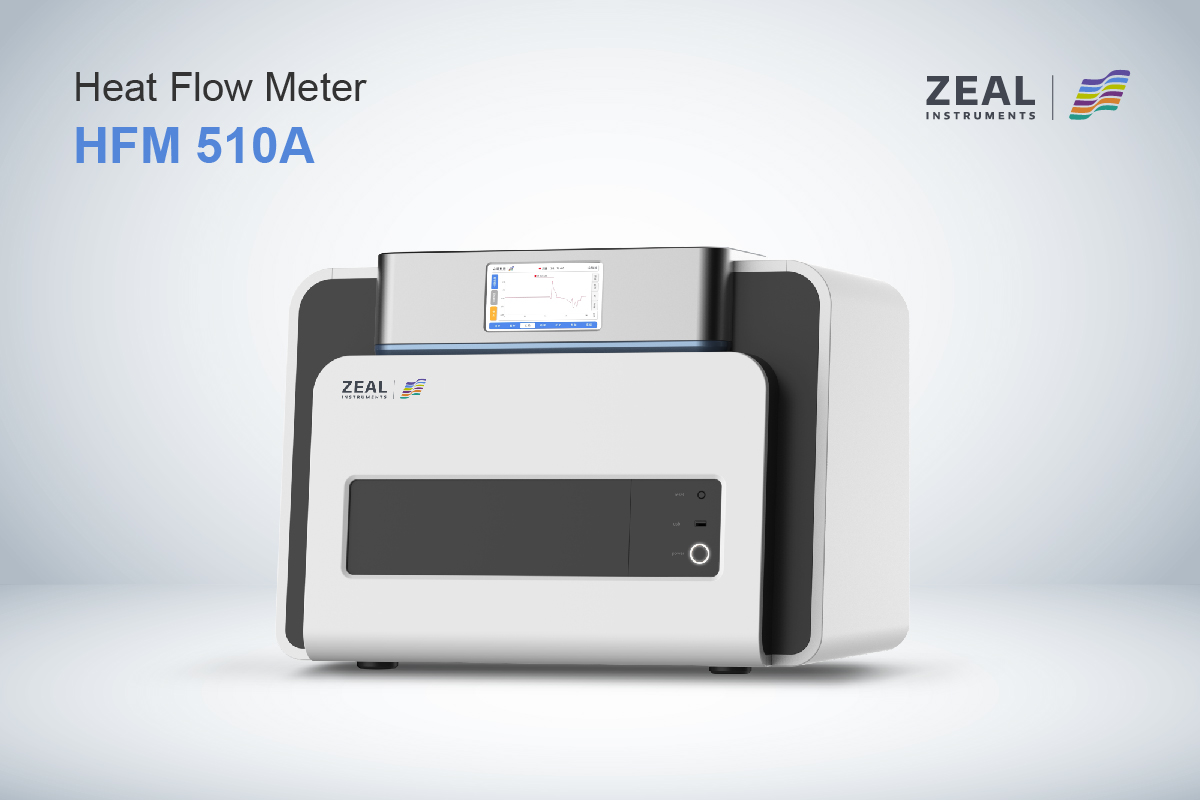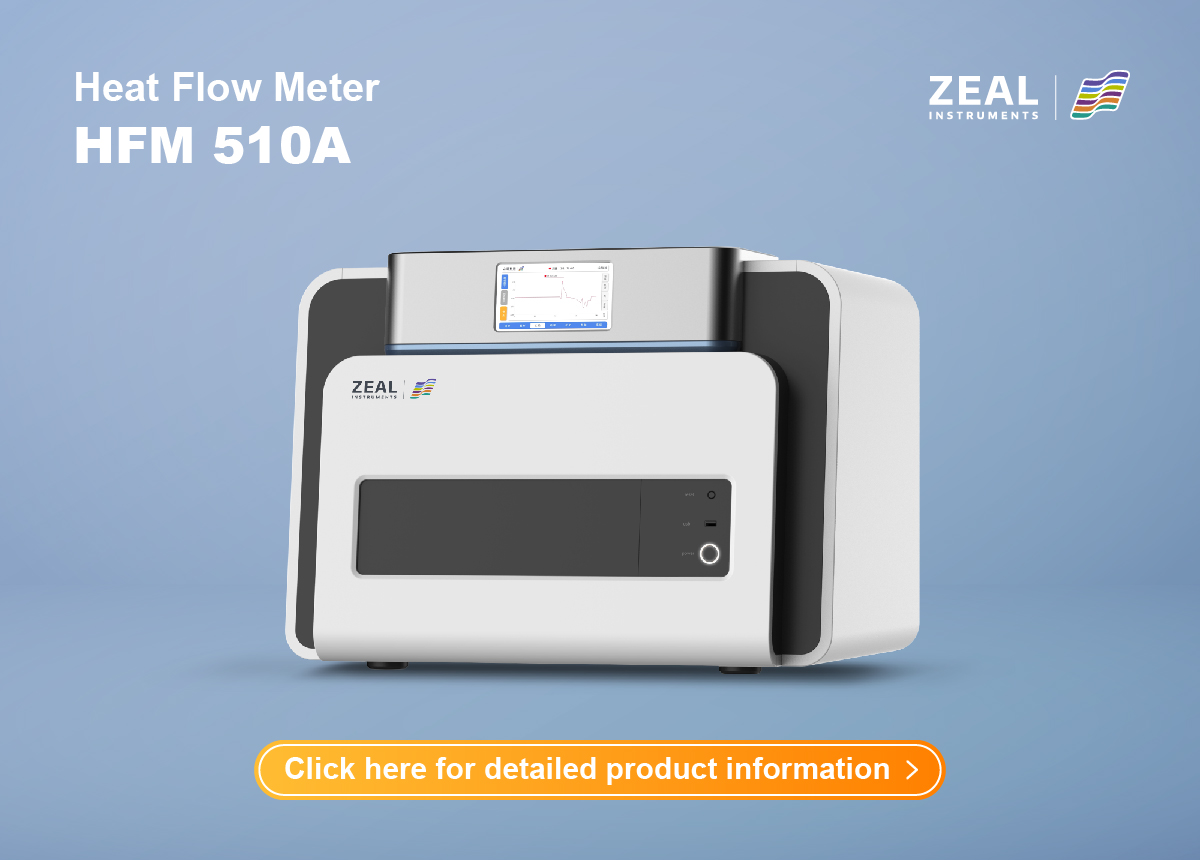Heat Flow Meter Equipment: A Comprehensive Guide
If you are in the market for a heat flow meter equipment, you have come to the right place. Heat flow meters are essential for measuring the thermal conductivity of insulation products, construction materials, and packaging. The thermal conductivity of a material is its ability to conduct heat and is critical for defining energy efficiency and thermal performance in a variety of applications.
Heat flow meters are designed to measure the rate of heat flow through a material. This is accomplished by placing a sample of the material between two plates, one of which is heated and the other cooled. The heat flow through the material is then measured by monitoring the temperature difference between the two plates. The resulting data can be used to calculate the thermal conductivity of the material. Heat flow meters are widely used in the construction industry, where they are used to measure the thermal conductivity of building materials such as insulation and roofing materials. They are also used in the packaging industry to measure the thermal conductivity of packaging materials such as foam and plastic.
Principles of Heat Flow Measurement
When it comes to measuring thermal conductivity, the heat flow meter is a reliable and accurate tool. The principle behind the heat flow meter is simple: it measures the amount of heat that flows through a material over a given period of time. This measurement can then be used to calculate the thermal conductivity of the material.
To understand how the heat flow meter works, it’s important to first understand the concept of heat flow. Heat flow is the transfer of thermal energy from one object to another due to a temperature difference between the two objects. The rate at which heat flows is determined by a number of factors, including the temperature difference between the objects, the thermal conductivity of the materials involved, and the distance between the objects.
The heat flow meter takes advantage of this principle by measuring the heat flow through a sample of material. The sample is placed between two plates, one of which is heated and the other of which is cooled. The temperature difference between the plates creates a flow of heat through the sample, which can be measured using a heat flow meter.
The heat flow meter itself consists of a thin, flat plate that is placed between the sample and the heated plate. The plate is made of a material with a known thermal conductivity, which allows it to act as a reference point for the measurement. As heat flows through the sample and the reference plate, the temperature difference between the two is measured by a thermocouple or other temperature sensor.
By measuring the heat flow and temperature difference, the heat flow meter can calculate the thermal conductivity of the sample. This information can be used to determine the insulating properties of a material, or to identify materials with specific thermal properties for use in various applications.
Overall, the heat flow meter is a valuable tool for measuring thermal conductivity. Its simple design and accurate measurements make it an essential piece of equipment for researchers and engineers working in a variety of fields.
Components of Heat Flow Meter Equipment
When it comes to measuring the thermal conductivity of materials, heat flow meter equipment is an essential tool. A typical heat flow meter equipment comprises several components that work together to provide accurate measurements. In this section, we will discuss the three main components of a heat flow meter equipment: sensors and detectors, data acquisition systems, and thermal guard plates.
Sensors and Detectors
The sensors and detectors are the heart of a heat flow meter equipment. They are responsible for measuring the heat flux and temperature difference across the sample. The most common type of sensor used in heat flow meter equipment is the thermopile sensor. This sensor consists of several thermocouples connected in series, which generate a voltage proportional to the temperature difference across the sample. Other types of sensors include thin-film heat flux sensors and heat flow plates.
Data Acquisition Systems
The data acquisition system (DAS) is responsible for collecting and analyzing the data generated by the sensors and detectors. The DAS typically consists of a computer and software that allows the user to control the measurement parameters, collect data, and analyze the results. The software can also provide real-time monitoring of the measurement process and display the results in graphical form. Some heat flow meter equipment also comes with built-in data acquisition systems, eliminating the need for a separate computer and software.
Thermal Guard Plates
Thermal guard plates are used to minimize the edge effects that can occur during the measurement process. These plates surround the sample and provide a thermal barrier between the sample and the environment. The thermal guard plates are typically made of a material with a high thermal conductivity, such as copper or aluminum. The plates are also designed to minimize any heat transfer between the sample and the environment, ensuring that the measurement is accurate.
In summary, a heat flow meter equipment comprises several components that work together to provide accurate measurements of the thermal conductivity of materials. The sensors and detectors measure the heat flux and temperature difference across the sample, while the data acquisition system collects and analyzes the data. The thermal guard plates minimize the edge effects that can occur during the measurement process.
Types of Heat Flow Meters
When it comes to heat flow meters, there are two main types: stationary and portable. Each type has its own advantages and disadvantages, depending on your specific needs.
Stationary Heat Flow Meters
Stationary heat flow meters are designed for long-term monitoring of heat flow. They are typically installed in a fixed location and are used to measure the thermal conductivity of building materials, insulation, and other stationary objects.
These meters are often used by engineers and scientists to measure the thermal properties of walls, roofs, and other building components. They can also be used to monitor the performance of insulation over time, helping to identify areas where heat loss is occurring.
Stationary heat flow meters are typically more expensive than portable meters, but they offer greater accuracy and are better suited for long-term monitoring.
Portable Heat Flow Meters
Portable heat flow meters are designed for on-site testing of heat flow. They are typically smaller and more lightweight than stationary meters, making them easier to transport and use in the field.
These meters are often used by contractors and building inspectors to test the thermal properties of walls, roofs, and other building components. They can also be used to identify areas where heat loss is occurring, helping to improve the energy efficiency of buildings.
Portable heat flow meters are generally less expensive than stationary meters, but they may be less accurate and less suited for long-term monitoring.
Overall, the choice between stationary and portable heat flow meters depends on your specific needs and budget. If you need to monitor heat flow over an extended period of time, a stationary meter may be the better choice. If you need to test heat flow in the field, a portable meter may be more practical.
Operational Guidelines
When using a heat flow meter equipment, there are several operational guidelines that you should follow to ensure accurate and reliable results. In this section, we will discuss calibration procedures, installation techniques, and maintenance and troubleshooting.
Calibration Procedures
Calibration is an important step in ensuring the accuracy of your heat flow meter equipment. You should calibrate your equipment before each use to ensure that it is working properly. Calibration procedures may vary depending on the manufacturer and the model of your equipment. Refer to the user manual for specific instructions on how to calibrate your equipment.
Installation Techniques
Proper installation of your heat flow meter equipment is essential for accurate and reliable results. Before installation, make sure that the equipment is clean and free from any debris. Ensure that the equipment is installed in a location that is free from any vibrations or other sources of interference.
Maintenance and Troubleshooting
Regular maintenance of your heat flow meter equipment is important to ensure its continued accuracy and reliability. Clean the equipment after each use and store it in a dry, cool place. If you encounter any problems with your equipment, refer to the troubleshooting section of the user manual for guidance.
In case of any issues, it is important to contact the manufacturer for assistance. Do not attempt to repair the equipment yourself as it may cause further damage.
Applications of Heat Flow Meter Equipment
Heat flow meter equipment is an essential tool in the construction and building material industry. It is used to measure the thermal resistance and conductivity of insulation products, packaging, assemblies, and construction materials. Here are some of the applications of heat flow meter equipment:
Building Material Analysis
Heat flow meter equipment is used to analyze the thermal performance of building materials. It helps to determine the insulation properties of materials used in walls, ceilings, and floors. This information is critical in designing energy-efficient buildings, reducing energy consumption, and minimizing environmental impact. Heat flow meter equipment can also be used to evaluate the thermal performance of windows, doors, and other building components.
Thermal Resistance Testing
Heat flow meter equipment is used to test the thermal resistance of materials. It measures the ability of a material to resist the transfer of heat. This information is used to evaluate the effectiveness of insulation products, such as batts, blankets, and foam boards. Heat flow meter equipment can also be used to test the thermal resistance of textiles, foams, and other materials used in the manufacturing of clothing, bedding, and other products.
In conclusion, heat flow meter equipment is a valuable tool in the construction and building material industry. It helps to evaluate the thermal performance of materials, reduce energy consumption, and minimize environmental impact. By using heat flow meter equipment, you can make informed decisions about the materials you use in your construction projects and ensure that your buildings are energy-efficient and environmentally friendly.
Regulatory Standards and Compliance
When it comes to Heat Flow Meter Equipment, it is important to ensure that it complies with regulatory standards to avoid legal issues. In the United States, compliance requirements for electrical and electronic equipment are addressed by the National Institute of Standards and Technology (NIST) . This includes consumer products, workplace equipment, medical devices, and other related products. Compliance with these standards ensures that the equipment is safe to use and does not pose any risk to the user or the environment.
In addition to NIST, the Department of Energy (DOE) establishes energy-efficiency standards for certain appliances and equipment. Compliance with these standards ensures that the equipment is energy-efficient, which not only saves energy but also reduces energy costs.
Moreover, ASTM International, formerly known as the American Society for Testing and Materials, develops and publishes technical standards for various materials, products, systems, and services. These standards cover a wide range of industries, including construction, energy, environmental, and many others. Compliance with ASTM standards ensures that the equipment meets the required technical specifications and performs as expected.
It is important to ensure that the Heat Flow Meter Equipment you purchase complies with these regulatory standards to avoid any legal issues and ensure that the equipment is safe to use, energy-efficient, and performs as expected.








































